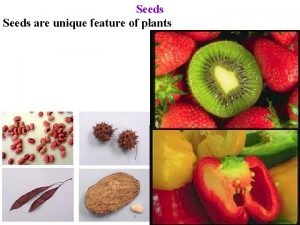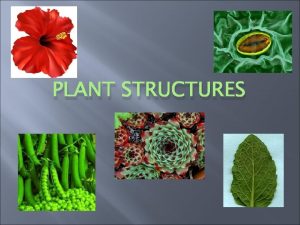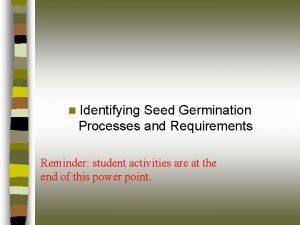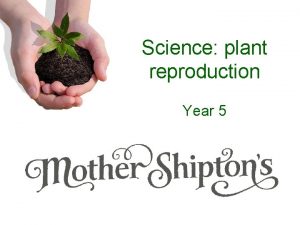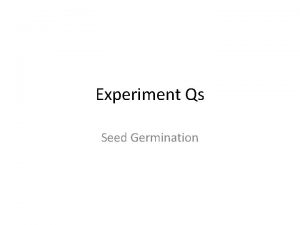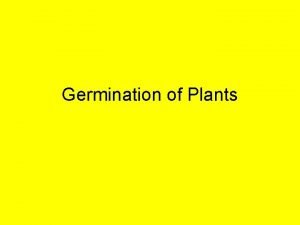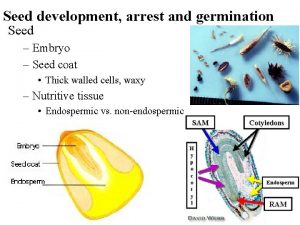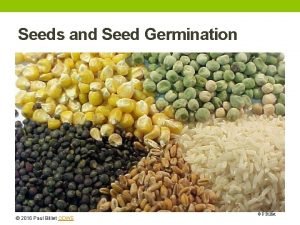Seeds and Germination Module 2 09222019 Seed Packets







- Slides: 7

Seeds and Germination Module 2: 09/22/2019

Seed Packets and Colors ● Everything you need to know will be on the seed packet, and you should look at the packet instructions even if you think you know how to plant your seed. ● The packet should also have a date of manufacturing, though most seeds can go pretty long before they need to be planted. (SAVE YOUR SEED PACKS!!) ● Before looking for seed packets, plan out your garden first and know what plants will grow best in which seasons. ● Seeds are often covered with a protective colorful coating for a few reasons: ○ ○ ○ The colors help a gardener or farmer know the different plants they are planting so they can space-out plants correctly. The coating often has both some kind of insecticide and also fungicide that help protect the seed in early stages until it germinates. The coating may also contain natural nutrients that the seed can use to propagate growth.

Three Distinct Types of Seeds ○ ○ ○ Heirloom: heirloom seeds grow plants that share the characteristics of the plant’s predecessors. ■ Heirloom seed can also be harvested, dried, and stored, so that one can replant the following season. This cannot be done with hybrid plants or with GMO seeds. ■ In order for seeds to be collected and used the following season, the heirloom plant must be openly pollinated and specifically cross pollinated with the same variety. GMO: This term can mean many things and we have technically been doing it for centuries. But, when we refer to GMO in the food industry and in our gardens, our definition is: genetically altered using molecular genetics techniques such as gene cloning and protein engineering. ■ One concern with GMOs is that they often have enlaced pesticides, though these pest eventually become resistant which makes them all the more difficult to control and deal with. Hybrid: A seed that will share the characteristics of one of the two plants that were crosspollinated to create the hybrid in the first place.

Open Pollination ○ Open Pollination: Open pollination is the process of plants openly pollinating from pollinators (hummingbirds, butterflies, bats, ect. ) ■ Hybrids are created when two different varieties are pollinated together. ■ Open pollination is necessary for heirloom seeds, but the crosspollination can only be done between two plants of the same variety. ● ● To avoid cross pollination of different varieties, read up on which plants will cross-pollinate with what other plants and how far the pollen will travel. Another option is to choose plants that bloom at different times, and consequently pollinated at different times too.

Taking care of seeds/plants early on ● Seeds and soil should be immediately watered and it is very important to keep soil moist continuously (ideally until harvest) for the first 3 weeks. ● To check soil moisture, stick a rod into the ground and the rod should be wet for at least 1 ft. (2 ft for shrubs, 3 ft for trees) ● To keep the soil moist, best practice is to water for short duration more times (in loose soil, i prefer every 6 hours for 5 minutes and after germination every 8 hours for 6 minutes) ● It is very important to keep the weeds down for these starting weeks so the seeds can get all the nutrition and water they need to germinate. ● You can put a cover the seeds if needed to protect from birds and pest. ● For nutritional help, add a small amount of organic fertilizer (I use coffee grounds because it is high in Nitrogen) and mix into the first 1” of soil all around the base of the plant (be careful not to deroot plant, this is important).

Germination ● ● Germination is simply the term for the sprouting of a seed. Germination usually takes anywhere between 7 -12 days. Expect that not all your seeds will germinate. Once plants germinate, you can start looking for signs of malnutrition, disease, ect. (we will cover these in a following lesson). ● About a week after germination, you should thin out small plants if needed. ○ Thinning is the process of removing unnecessary plants because if we have too many plants, then none of them will have enough nutrition and water and all will suffer.

Transplanting ● If planting into native soil, dig a diameter 2 times as wide as the depth of the whole (then fill with compost or organic matter). ○ This is so the roots can expand easily through the broken down soil. ● Make sure the soil and roots stay in tact; best way to do this is by squeezing container until soil is loose and then taking out upside-down. ● Don’t plant (or buy the transplants in the first place), because possible garden contamination, if the roots and soil have these negative indicators: ○ ○ Dead or decaying roots Abnormal leaf yellowing Foul smell coming from the soil Weed propagation ● Plant at a good distance so roots don't encroach on each other, but leaves completely cover soil once fully grown. This will prevent water evaporation.


